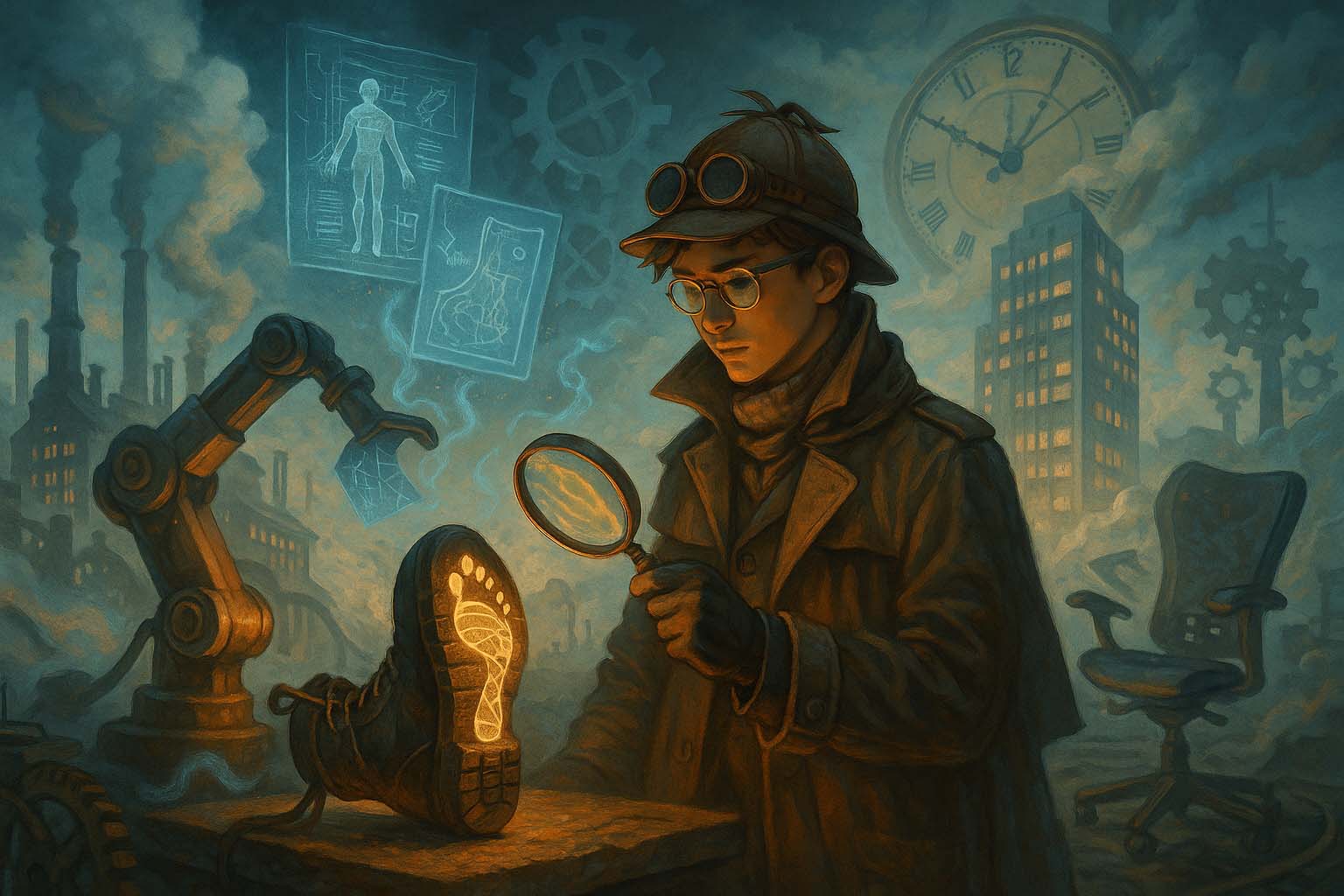
Occupational Medicine
- Posted by admin
- Categories Primary, Community & Continuity Care
- Date May 21, 2025
- Comments 0 comment
The Worksite Sleuth’s Domain – Cracking the Cases Where Health Meets Hazard
1. Introduction: The Scene of the Specialty
Step into the shoes of an Occupational Medicine sleuth.
These detectives follow the trail not just through hospitals or homes—but through warehouses, factories, offices, and mines. They investigate the link between livelihood and life, asking how the places we work shape the way we feel, function, and fall ill. In this specialty, the symptoms often start where the shift begins, and the diagnosis must factor in more than biology. Welcome to a world where a cough might be coal dust, a rash might be latex, and stress might come in a uniform.
2. Key Mysteries They Solve (Common Conditions & Issues)
These detectives specialise in solving cases involving:
- Work-Related Injuries – from repetitive strain to acute trauma.
- Exposure-Related Illnesses – such as asbestosis, silicosis, dermatitis, and chemical poisoning.
- Mental Health in the Workplace – including burnout, PTSD, and adjustment disorders.
- Fitness for Duty & Return to Work – assessing when someone can safely do their job—and when they shouldn’t.
Each case requires a diagnosis with context: not just what happened, but where, why, and how.
3. Their Trusted Tools & Techniques
Every detective has their kit—and in Occupational Medicine, tools may include:
- Workplace Assessments – site visits to observe risks in real time.
- Exposure Histories – detailed timelines of toxins, noise, vibration, or trauma.
- Functional Capacity Evaluations – to match recovery with realistic return plans.
- Legislation Literacy – understanding compensation law, reporting duties, and employer obligations.
This is forensic medicine of the working world—where every detail counts.
4. The Charms of This Field: Why It Captivates the Curious
- Applied Problem-Solving: Trace illness to hidden environmental factors.
- Holistic Perspective: Integrates biology, psychology, engineering, and law.
- Preventative Power: Change one policy, protect hundreds of workers.
- Real-World Impact: You’re not just treating patients—you’re making workplaces safer.
This is medicine with a hard hat and a clipboard—a blend of detective work, duty of care, and design thinking.
5. Challenges: The Toughest Cases They Face
- Causality Debates – Was it the job, or just bad luck? The answer matters.
- System Complexity – Navigating between insurers, employers, and advocacy groups.
- Delayed Presentation – Diseases like mesothelioma may not surface for decades.
- Ethical Crossroads – Balancing duty to the worker with obligations to employers and systems.
But the seasoned Occupational Physician knows: the truth is often in the timeline.
6. Famous Cases and Hallmark Clues
- The “Classic Presentation” – Noise-induced hearing loss in a long-haul truck driver.
- The “Zebra” – Rare chemical exposure presenting as neurological symptoms.
- The “Aha Moment” – Tracing an outbreak of headaches to a ventilation fault in a shared office.
7. Your Training Trail: How to Join the Investigation
To become an Occupational Medicine detective:
- Build clinical knowledge in general medicine and toxicology.
- Study public health, environmental medicine, and medico-legal frameworks.
- Train your eye to assess ergonomics, workflow, and systemic risks.
- Learn to collaborate across sectors—HR, unions, safety inspectors, engineers, and legal teams.
Whether advising a factory on safer solvent use or supporting a teacher with long COVID back into work, your investigations shape safety far beyond the clinic.
8. Final Words: The Signature of the Occupational Medicine Detective
Occupational Medicine detectives work at the intersection of health, livelihood, and justice.
They restore function, prevent harm, and advocate for safe systems, not just treated symptoms.
They ask not just “What is wrong?”—but “How did work shape this?”
So if you’re drawn to clues that hide in daily routines, and diagnoses that ripple through entire organisations—
then this is your scene to investigate.



